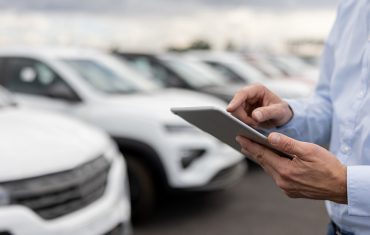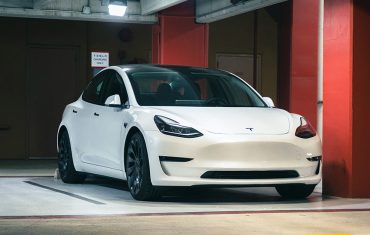
The keys to truly effective management of your business fleet
For your fleetChris Park is SG Fleet’s Manager of Strategic Fleet Consulting for Australia and New Zealand. His responsibilities are to examine any given customer’s fleet from end-to-end, and ensure it’s aligned with their organisational strategy. Maybe more importantly, Chris assesses whether a customer’s fleet is as cost and process efficient as it can be.
Given Chris’ role was created by SG Fleet in direct response to customer requirements, we thought we’d introduce him and share some of his insights into how every fleet manager can consider whether they’re effectively managing their fleet (or not).
Chris, please tell us a little about your background before joining SG Fleet.
“I’m an accountant, but after spending a couple years doing accounting I realised it wasn’t for me. So I moved into finance, which I feel is a little bit different in that it’s more commercial and forward looking. I think I am a better finance person. Prior to this role, I was Head of Asset Risk at one of our competitors for seven years, so I came to this role with a good understanding of assets and depreciation, residual values, and maintenance.”
What are the key elements for best practise in cost-effective fleet management?
“SG Fleet has a consulting framework around which my role was built. A couple of areas in that framework that I think are particularly relevant when reviewing strategic fit and cost effective fleet management are Mobility Design, Investment and Cost Analysis, Safety and Chain of Responsibility, and Asset Benchmarking.”
Explain what ‘reviewing strategic fit’ means for us.
“At a high level, it’s about understanding what the organisation’s strategic goals and objectives are; seeing how, and where their vehicle fleet touches each of these objectives; and how the fleet supports the organisation’s goals and objectives.”
Shall we start with the first area you look at when reviewing strategic fit – Mobility Design?
“In terms of Mobility Design, elements I’ll check include the fleet policy supporting the objectives of the organisation, and that there’s a clear fit-for-purpose of vehicle choice.”
“Another area that’s important to look at is the concentration of suppliers and planned replacement programs in an organisation. I see some fleets – especially owned fleets – where there’s a multitude of different makes and models, and sometimes that’s because the business has come through some hard times and finally has some capital; they give that to the procurement guy and he’s got a million dollars to spend, and he goes out and buys a million dollars worth of cars in one year. Now, he’s going to buy whatever’s available, so you might end up with a mix of manuals and automatics, and different makes and models, and that’s less than ideal from a concentration perspective.”
“As much as possible you want to concentrate your buying power to get discounts and ensure the best price. And that’s more easily done under a leasing model because, when you realise you need to add another vehicle, it’s only going to be $1,000 versus $50,000.”
Are there any other elements to consider under Mobility Design?
“It also pays to look at rationalisation of accessories or build specifications. If you’ve got a complex build – like trucks and light commercial vehicles – it’s common to see clients over-spec the vehicle. So, again, this all comes back to the purpose of the vehicle, and do you really need everything on every vehicle? Can you put that spec on the vehicles that are going into the bush or mine and then have a different specification for vehicles that are being used in a metro environment?”
Investment and Cost-Analysis sounds pretty straightforward – are there any calculations specific to fleet leasing?
“Obviously, understanding your fleet cost is key but something a lot of clients don’t know is what it’s costing them to drive their vehicle further, or more kilometres. ‘Cents per kilometre’ is a simple metric we like to use because everybody can understand it and then it’s really easy to make comparisons across makes and models, and different terms.”
“Investment and Cost-Analysis is answering a question such as: do I keep my vehicles for eight years or do I keep my vehicles for three years? You can do those kinds of cost comparisons. I often provide our clients with this kind of analysis, particularly in comparing ownership costs versus leasing costs for different makes and models. And I’ll express that in a whole-of-life cost, as well as a cents-per-kilometre basis. Sometimes ownership is cheaper but nine times out of 10, leasing is more economical.”
What are some risks associated with owning a fleet of vehicles, as opposed to leasing?
“I tend to come across customers that are nowhere close to the vehicle value chain. For example, not-for-profit organisations providing healthcare services that own their fleets. The question I ask them is: why do you own your fleet? What expertise have you got in managing a fleet to make sure you’re buying at the best price and maintaining the fleet appropriately? Wouldn’t your money and capital be better spent on activities that support your business or support your organisation?”
“Often, we see owned fleets where you’ve got one or two people who are doing their best. And maybe it’s an organisation that’s grown from being very small when that was once a manageable function but they’ve now grown to a point where things are getting missed and, certainly, you don’t want to miss maintenance or insurance – that has a safety implication.”
That leads us to Safety and Chain of Responsibility… What are the implications on fleet management and fleet efficiencies?
“Vehicles are a place of work, and they need to be fit-for-purpose, well-maintained and safe. I see a lot of clients so focused on cost that they’re driving the vehicles they own into the ground; they want to maximise the value of a depreciating asset. Now, the concern I have around this is, as vehicles age, they need more maintenance. Where more maintenance is required, there’s the risk of missing maintenance. And then the vehicles are also off the road a lot more often. Having a vehicle off the road is very expensive.”
“Another big one in Safety is, obviously, if somebody has a serious accident or fatality – even if the vehicle is maintained – if they’re in an old vehicle, and the safety technology isn’t there, what’s that going to look like in terms of the media, in terms of reputational damage to the organisation? There’s a huge reputational risk around really old fleets. There’s a very significant risk if they’re poorly maintained. Under ownership or leasing, regular fleet replacement is critical to make sure those risks are mitigated. Obviously, we’re biased at SG Fleet but leasing provides a regular regimen to ensure this happens.”
What does Asset Benchmarking entail?
“Part of being cost-effective is benchmarking and knowing where you stand. We can benchmark across different make and models or we can also benchmark your fleet against other clients that we have in our portfolio. Our customer relationship managers, or myself, can provide a lot of information and insights around trends that we’re seeing in benchmarking, and across more sites and usage, and provide a catalyst for change.”
Finally, is there anything in terms of fleet management and efficiencies that is particularly pertinent as we approach the end of the decade?
“My role operates across Australia and New Zealand, so I consult for both. Electric vehicles will have an increasing impact, particularly in New Zealand. The uptake in Australia is quite slow because there’s little interest at the federal government level. We’re starting to hear and see some interest at the state level, so that’s going to start moving, I believe. Electric vehicles will come quicker than anyone’s expecting in Australia, but we’re quite a way behind New Zealand in that space.”
“Other than that, in 2019 globally, there’s been a shift away from diesel vehicles after the Volkswagen ‘dieselgate’ controversy, so I would still expect that to continue. You’ll see people moving away from diesel but how much that influences Australia is tough to say. Diesel will still play a big role in the commercial vehicle space – it always has and probably always will until electric vehicles fill that niche.”
“The last thing we’re seeing, which is more of a global trend, is a shift to ride-sharing and user-pay models. There’s a move away from car ownership but more on a personal level than corporate. But we will start to hear and see more and more of that.”
Find out if your fleet is operating as efficiently as possible by asking about SG Fleet’s Strategic Fleet Consulting today.
 Driving Insights
Driving Insights



